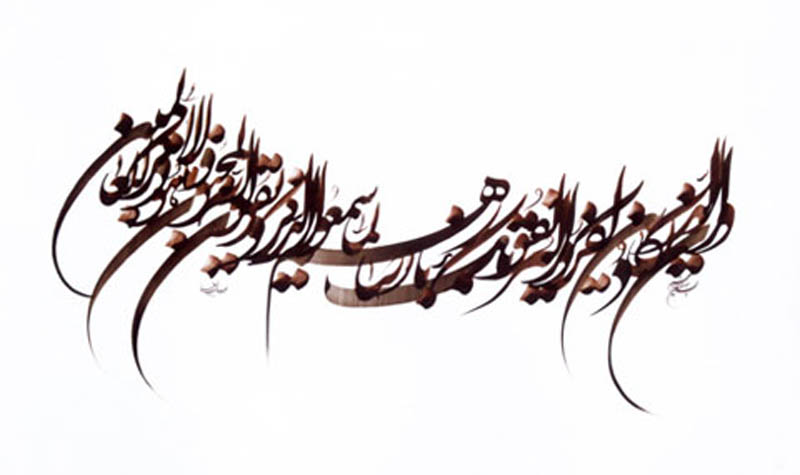Calligraphy
Persian Calligraphy (خوشنویسی ایرانی) is one of the most revered arts throughout Persian history and is an example of fine Persian culture. The history of calligraphy in Iran dates back to the pre-Islamic era when Zoroastrian-influenced Persian culture held beautiful and clear writings in high esteem.
Around roughly one thousand years ago, six genres of Iranian calligraphy (Tahqiq, Reyhan, Sols, Naskh, Toqi, and Reqa) were created. These genres were common for a few centuries in Persia. In the 12th century, the “Naskh” and “Reqah” styles were combined and a new genre of Persian calligraphy named Taliq (Taliq) was invented. Eventually in the 14th century, Naskh and Taliq were combined, and the most attractive Persian calligraphy style, Nastaliq (نستعلیق) was created.
During the past 500 years, Nastaliq calligraphy has been one of if not the main Iranian script styles used in writing the Perso-Arabic script. Unlike its ancestors, Nastaliq flows effortlessly and is characterized by natural curves. In the 17th century, a new genre called cursive Nastal?q shekasteh, ((نستعلیق شکسته) was created. This style is based on the same rules as Nastaliq, but it provides more flexible movement. It is more stretched and curved in comparison.











